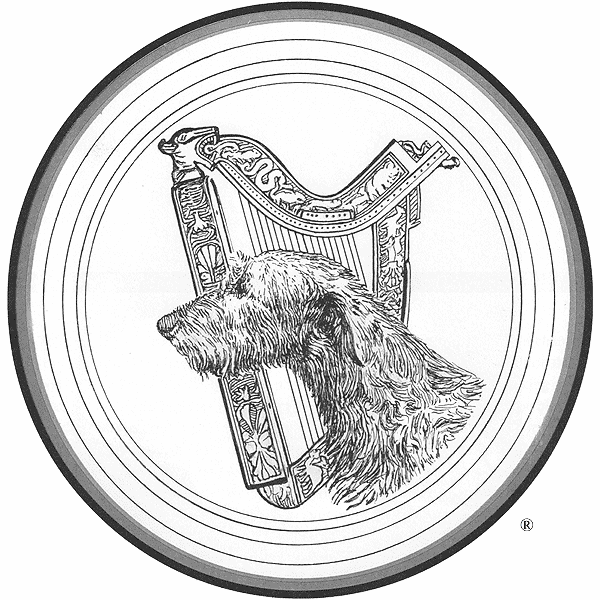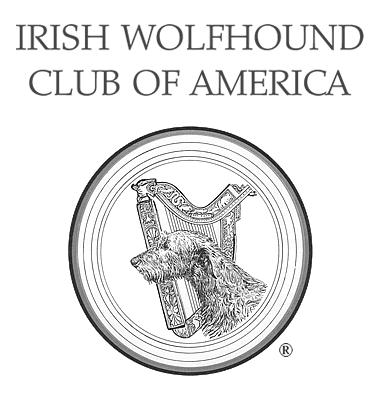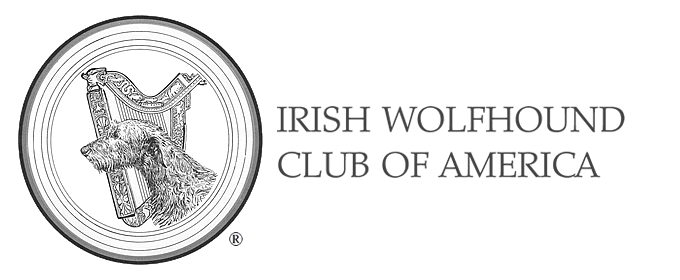Canine Acute Gastric Dilatation (2008)
Acute gastric dilatation is a disease of dogs characterized by sudden abdominal bloating, attempts to vomit, collapse, and death. It is often referred to as "canine bloat" or "volvulus of the stomach". The disease was first described in the dog by Cadeac in 1906. In this first description, the author likened the stomach to a pear on a branch, fixed solely at the esophagus (the stem), and free to spin about its mesenteric axis as a pear might be spun on its stem. Early drawings and descriptions documented the fact that the stomach had twisted about its mesenteric axis; i.e., it had twisted around a line drawn through the mesentery of the stomach, perpendicular to the long axis of the stomach. There is a general consensus that dilatation is the primary event and that the stomach twists in a proportion of affected dogs and does not in others.
Canine acute gastric dilatation, with or without volvulus, is recognized as a disease of older individuals of the larger breeds of dogs. It constitutes a major cause of death in German Shepherd Dogs, Irish Setters, Great Danes, St. Bernards, Bloodhounds, Boxers, Weimeraners, Collies, and Doberman Pinschers. Large mongrel dogs whose phenotype is derived, in part, from the aforementioned are equally susceptible. Less frequently, Bassett Hounds, Dachshunds, and Standard Poodles may also succumb to acute gastric dilatation. Accurate figures regarding the incidence and mortality rate in canine acute gastric dilatation are not available. However, conservatively estimating two cases annually per practicing veterinarian, there may be as many as 90,000 cases per year. The dramatic life‐threatening appearance of this disease in some of our best kept, fittest, pure‐bred animals, in the prime of life, as well as the high mortality rate cause tremendous concern on the part of breeders and show dog enthusiasts. In addition, acute gastric dilatation is the greatest single cause of spontaneous death in military working dogs. An identical disease occurs in humans, monkeys, marmosets, horses, ruminants, pigs, cats, foxes, mink, captive wild carnivores, rabbits, nutria, guinea pigs, rats and mice.
The occurrence of acute gastric dilatation after consumption of a large meal by a large dog suggests that engorgement has something to do with the cause. Commercial dry dog food products that consist primarily of readily digestible and fermentable foodstuffs have been incriminated. In 1974, following seven years of research, Van Kruiningen et al proposed that bacterial fermentation was the cause of the gaseous gastric dilatation. These conclusions were based on seeing gas evolve in gastric contents at the time of autopsy, the flammable nature of gas in some cases, and significant increases in gastric carbon dioxide and hydrogen. Isolation of gas‐producing clostridia, experimental production of acute gastric dilatation with heat‐treated stomach contents in gastric‐ligated experimental dogs, and the demonstration of Clostridium perfringens in the majority of bloat cases suggested that Clostridium perfringens may be a significant etiologic agent. This concept of the pathogenesis has not been accepted universally. Others believe that aerophagia orthe chemical liberation of carbon dioxide isresponsible for the gaseous distention. In 1977, Caywood et alstudied seven cases at the time of surgery. They were unable to demonstrate Clostridium perfringens in three that were cultured, and concluded that gas concentrations, except for oxygen and carbon dioxide, were similar to atmospheric air. These authors reported C02 concentrations up to 24% (normal = 1%) and speculated that chemical COZ formation could have accounted for the concentrations measured. Their failure to find detectable increases in hydrogen and methane gas production allowed them to conclude that fermentation was not responsible for the C02 increases observed. The gas samples analyzed by Caywood and co-workers were collected and stored in 60 ml. polypropylene syringes (a composition which is not air‐tight). These authors failed to show that concentrations of gases stored in such containers would not equilibrate with air.
In 1978, Rogolsky and Van Kruiningen showed that lactic acid levels were nine times greater in stomach contents from cases of acute gastric dilatation than from controls, that there was a substantial increase in gastric C02 in acute gastric dilatation, and that fermentation rates were three times as rapid in contents from AGD cases. Warner and Van Kruiningen showed that Clostridium perfringens were part of the gastric flora in 67% of cases and in 70 percent of 100 control dogs. Indeed, in smaller studies that had been reported earlier, it was not unusual to demonstrate Clostridium perfringens in 100% of dogs' stomachs. Thus, it is surprising that Caywood et al were unable to demonstrate these bacteria in the three dogs that they sampled. There is little question that if proper selective media are employed, Clostridium perfringens can be demonstrated as part of the gastric flora in almost 100% of normal dogs, and in those with AGD. In 1980, Bennett et al demonstrated Clostridium perfringens in the gastric contents of 21 of 24 monkeys with acute gastric dilatation (a disorder identical to that of the dog), in only 2 of 18 samples from normal animals, and in 5 of 11 lots of feed (a cereal grain‐soybean base, Purina monkey chow). In 1981, Stein et al reported the occurrence of 29 cases of acute gastric dilatation in marmosets over a five‐week period following therapy with Gentamicin and Furoxone. Clostridium perfringens Type A, was demonstrated in the gastric contents of all 25 animals that were autopsied. The latter authors suggested that an alteration in the gastric microflora resulting from antimicrobial therapy promoted clostridial overgrowth.
Canine acute gastric dilatation occurs through interaction of the susceptible individual, the abnormal stomach, readily fermentable feeds, a gas‐producing gastric flora, and other precipitating elements.
- Repeated once‐a‐day feeding, following a 24 hour period of fasting, may predispose our large breeds of dogs by encouraging engorgement, and concomitantly, by producing enlarged, heavy, stomachs that lack normal motility. Rats that were fed ad libitum developed normal stomachs, whereas those intermittently fasted had larger, heavier, more thickly walled stomachs. Dogs that have died of acute gastric dilatation often have an entire meal still present in the stomach 12‐18 hours after eating, a clear indication of delayed gastric emptying. In a study conducted at the University of Connecticut, gastric function and morphology were compared in four groups of litter‐mate Irish Setters. Two were fed Purina Dog Chow once daily, two were fed Purina Dog Chow three times daily, two were fed a meat and bone ration once daily, and two were fed a meat and bone ration three times daily. The meat and bone ration consisted of ground horse meat and chicken parts, bone and all. After two years of these exclusive rations, no differences were found in gastric acid production, post‐prandial serum gastrin levels, and the number of post‐prandial gastric antral contractions perminute among the groups of dogs. The one difference that appeared outstanding among the groups was the large size of the stomachs of dogs fed Purina Dog Chow once daily. Such stomachs were much larger than those of the other three groups of dogs when observed at cinefluoroscopy and when measured at autopsy. AGD occurred in the group fed Purina once daily, when diet was the only variable.
- Every day feeding of rations devoid of indigestible roughage may contribute to abnormal gastric motility. The obligate role of roughage in the ruminant stomach is well established; chickens deprived of roughage develop dilated atonic stomachs. Recent studies of diverticulosis have shown a similar need for fiber in the human colon. Although we were unable to demonstrate differences in the number of antral contractions per minute among our groups of Irish Setters, the development of enlarged stomachs in the dogs fed Purina Dog Chow once daily suggests that abnormal motility does, in fact, occur. Limitations in the recent study precluded measurements of the amplitude of antral contractions. We were unable to make any statement about contractions of the body and fundus of the stomach. Carnivores may require fin, fur, feathers, cartilage, and bones for normal gastric function. A review of the literature published by Landry and Van Kruiningen, which reported the food habits of feral carnivores, makes it clear that the staple diet of carnivores living in a natural setting includes other animals, carrion, and occasionally, fruits and grasses. The larger the predator, the larger the prey. Wolves and cougars, having the capability to bring down large species of prey, thus eat less frequently than other carnivores and tend to engorge when the do. Although the domestic dog is regarded as a descendant of the wolf, out-crossings with other canid species appear to have been responsible for many of our domestic breeds. Most domestic breeds have conformation, size, ferocity, and hunting capability similar to that of the coyote and the fox. The latter are carnivores that hunt individually, catch and kill small animals, eat carrion, and occasionally eat fruits and grasses. From a review of stomach content analyses of feral carnivores, it is reasonable to surmise that carnivores in their natural environment consume diets high in animal protein and roughage (not plant fiber but indigestible or poorly digestible parts of animal carcasses; e.g., bone, cartilage, scales, fin, fur, feathers, tendon, and teeth) and low in carbohydrates and caloric density (the fat content of the flesh of wild animals is 5%). The medium and small wild carnivores undoubtedly eat several times daily (nightly), catching "as catch can", with periods of rest or fruitless scavenging or hunting in between. Stomach analyses reveal that carnivores masticate their prey minimally and prefer to swallow large boluses; i.e., portions of carcasses with indigestible elements included.
- Every‐day feeding of rations consisting exclusively of cereal grains and soybean meal undoubtedly affects the gastric flora. Flora are known to adapt to diet. Meat and bone diets may be expected to promote a gastric flora quite different from that reared on kibble. Adaptation to a specific diet may very well predispose to excessive fermentation of that diet by flora attuned to it. Of additional concern is the technologically advanced, excessive processing that occurs in the manufacture of cereal grain, soybean dog food preparations. The fine grinding and super‐heating which are a part of this process cause these products to be "readily digestible" or "pre‐digested" for the pet, as well as readily fermentable for its gastric flora. In a laboratory setting, commercial dry dog food mixed with water to form a broth makes an excellent bacteriologic media for the growth of Clostridium perjringens and for abundant gas production. Because of the suspicion that the carbohydrate portion of soybean meal maybe the most fermentable ingredient in commercial dry dog foods and thus most responsible for fermentative gastric dilatation, several dog food manufacturers have produced cereal grain dry products without soybean, using some other protein source. There is evidence suggesting that the replacement of a soybean-containing dry cereal product with a product without soybean meal has been successful in eliminating acute gastric dilatation.
- Clostridia, lactobacilli, peptostreptococci, sarcina and yeasts, normal constituents of the canine flora, are gas producers. The clostridia are notorious for generating large amounts of COZ and smaller amounts of hydrogen. The study by Warner and Van Kruiningen showed that 72% of healthy dogs have gastric clostridia as a part of their flora. Recent identification of Clostridium perfringens in endemics of acute gastric dilatation in monkeys, and in epizootics of acute gastric dilatation in antibiotic‐treated marmosets, supports the contention that Clostridium perfringens is significant in acute gastric dilatation of the canine. Acute gastric dilatation may be similar to clostridial enterotoxemia of lambs, in that all, or almost all, healthy individuals may harbor the organisms. However, it is only in rare circumstances that the clostridia overgrow, producing toxins in the small intestines of sheep and gases in the stomachs of dogs. Splenic engorgement occurs in canine acute gastric dilatation. In rare instances, it has been documented to occur prior to the onset of gastric dilatation, and is a feature of some forms of clostridial toxemia. If clostridia were solely responsible for acute gastric dilatation, presumably those individuals free of them would be at lower risk. Other bacteria may participate in a chain of events ultimately leading to excessive fermentation and gaseous distention.
- Other influences bearing on gastric motility appear to be contributory in specific instances of acute gastric dilatation. Anxiety, physical exertion, water consumption, dietary lipid, meal temperature, ambient temperature, and antecedent gastric disease are all known to affect motility.
The lesion of canine acute gastric dilatation is severe, gaseous and fluid enlargement of the stomach, to proportions approximating the size of a volleyball or basketball. The abdomen is protuberant and tympanitic. Eyes are often sunken and the mouth may be dry, or in the event of excessive salivation, flooded with saliva. In its normal position, the stomach of the dog lies mostly on the left side, with the pylorus on the right, and courses transversely from left to right. Under the influence of acute distention, the stomach pushes other structures aside and assumes a longitudinal orientation in the abdomen of the dog. In those individuals that have succumbed to simple acute gastric dilatation without volvulus, the only findings are an enlarged stomach displacing other viscera, compressed, collapsed lungs, and gaseous distention of the small intestine. In that proportion of dogs that experiences volvulus as well (an event that may take place during the distention and may result from violent vomiting attempts by the dog against a closed cardia), the stomach rotates on its mesenteric axis in a clockwise direction. The duodenum becomes entwined around the esophagus; the spleen is carried with the stomach from its location on the left side of the abdomen, to a position caudodorsal to the stomach, and then over to the right abdomen up against the diaphragm. In most instances when volvulus occurs, there is a 360° clockwise twist (as viewed ventro‐dorsally). The spleen does not follow the stomach a full 360°. Instead, it becomes trapped and folded in a "V" up against the right side of the diaphragm. In a lesser number of .cases, the stomach twists 180°‐270° and the entwinement of the spleen is more variable. Sometimes, the spleen becomes wisted on its long axis within the gastrosplenic ligament, a splenic torsion. In 360° volvulus, the distal end of the esophagus is twisted closed and the proximal end of the duodenumis occluded as well. The spleen is greatly enlarged and engorged with blood in almost all cases, regardless of whether or not volvulus occurs, a finding that suggests a toxic event. The ileus that occurs in acute gastric dilatation is sometimes associated with a reddening of the intestine, and almost always with ballooning and dilatation of the intestine. This feature has not received significant attention, but may be evidence of a clostridial enterotoxemia. Rabbits that die of acute gastric dilatation sometimes have significant segmental hyperemia, reddening, and bloody engorgement of the intestine, highly suggestive of clostiidial enterotoxemia.
Canine acute gastric dilatation is a disease of domestication. It occurs in our best cared‐for animals, often those of larger breeds, which are kept in a chain‐link enclosure on a cement floor, and fed with great scrutiny, a high priced, commercial dry dog food once daily. It is noteworthy that acute gastric dilatation seldom or never occurs in dogs that are allowed to run free or dogs that are fed carcasses of other animals. Shortly after consuming a large meal, usually following a 24 hour fast (once‐a‐day feeding), gaseous dilatation of the stomach causes abdominal distention and discomfort. The ever‐increasing gastric dilatation causes the dog to whine, pace, or lie down in discomfort. As the stomach presses forward on the diaphragm, breathing becomes difficult.
Receptors in the dog's stomach signal the need to vomit and unsuccessful attempts are often made. It is apparently during the abdominal and gastric contractions to vomit that twisting of the stomach occurs, in some, but not all cases. This twisting, similar to the twirling of a pear on a branch, entwines the entrance and exit channels of this horseshoe‐shaped organ, excluding all possibility of entrance into, or passage of materials from the stomach. Such a twirling is called "volvulus" and has serious implications because of the strangulation of gastric blood supply within the 180°‐360° twist. In some dogs, attempts to vomit lead to perforation of the stomach; in most, perforation does not occur. Collapse and death soon follow, however, because of respiratory embarrassment and interference with abdominal return of blood to the heart.
Clinical signs of acute gastric dilatation include abdominal distention, abdominal discomfort, whining, panting, pacing, repeatedly getting up and lying down, attempted vomiting, salivation, saw‐horse stance, and prostration. Drum‐like notes may be elicited by tapping on the abdomen to confirm the diagnosis. The inability to pass a stomach tube beyond the cardia of the stomach indicates that volvulus has occurred as well. In these instances, a radiograph will confirm that the spleen is located on the right side rather than on the left.
Acute gastric dilatation should always be regarded as an emergency. No owner should attempt home remedy unless instructions have been given by a veterinarian beforehand. When acute gastric dilatation occurs, a veterinarian should be contacted immediately by telephone; the dog should then be taken to an animal hospital for treatment. There, a decision must be made between medical or surgical treatment based on the circumstances of the individual case. Current medical therapy includes (1) relieving the distention by "tapping the abdomen" with a needle; (2) administration of a relaxant, (3) passage of a stomach tube; (4) vertical shaking of the dog, held upright in a bear‐hug position, if volvulus is present; (5)release of gas through manipulation of the stomach tube; (6)removal of stomach contents by aspiration and manual compression on the abdomen; (7) administration of antibiotics and a simethicone containing antacid via stomach tube; and (8) administration of antibiotics and a corticosteroid by intramuscular injection.
Current surgical treatment includes (1) relieving the distention by "tapping" the abdomen with a needle; (2) administration of pre‐anesthetics and cortisone preparations to relieve shock; (3) surgical preparation; (4) anesthesia (5) fluid and antibiotic therapy; (6) incision of the abdomen; (7) passage of a stomach tube; (8) manipulation of the stomach and correction of any volvulus; (9) removal of gastric contents; (10) administration of antibiotics and a simethicone containing antacid; (11) surgical closure. Hospitalization and after‐care treatment may be necessary for several days following either medical or surgical treatment.
In the event that a veterinarian cannot be reached in an emergency, dog owners may attempt to force the bloated animal to swallow 6 ‐ 8 oz. of a simethicone containing antacid (Digel or Mylanta). Following medication the animal should be walked for 20 minutes. Eructation (belching) or vomiting signals relief. Should this fail, the owner may attempt to pass a stomach tube (a 4' length of 5/8" soft garden hose) through a piece of 2' x 4' with a hole in it, held in the dog's mouth. Such a procedure should only be attempted with the help of veterinary instruction, either beforehand or by telephone. In the event of a volvulus, the tube cannot be passed beyond the dog's chest. Holding the dog upright in a bear‐hug position and jouncing it up and down may relieve the volvulus sufficiently to allow continuation of the tube into the stomach. Success is signaled by a rush of gas from the tube and should be followed by administration of a simethicone preparation. If the above methods fail, it may be essential for the owner to muster the courage to pierce the dog's abdomen and stomach with a sharp object in order to release the gas and save the animal's life. A hypodermic needle is the best instrument for this procedure, but lacking that, an ice pick or similar sharp object may be employed. The piercing instrument is stabbed just below the sternum, above the belly, on the midline, through the skin into the stomach. Following the release of gas, the instrument may be quickly withdrawn. Veterinary follow‐up care is essential because of the risk of infection produced by the puncture.
Acute gastric dilatation can be prevented. Undomesticated carnivores eat numerous small meals throughout the day and night, consume a wide variety of foods, and live on dietary substances compatible with their gastrointestinal tracts. Only domestication allows or forces animals to consume large meals of readily digestible carbohydrates after long intervals of fasting. Repeated once daily engorgement and the lack of bones, cartilage, scales, fur and feathers within the stomach undoubtedly contribute to the deranged gastric motility believed to predispose to acute gastric dilatation. Dietary roughage may well be the single most important preventative that can be recommended. The roughage‐stimulated stomach has motility, which reduces the opportunity for fermentation. Carbohydrates and flora flow through with regularity.
Dietary roughage can be provided in the form of one raw or cooked whole chicken, bones and all, fed twice weekly. Cooking will soften the bones to make them safe. Additional sources of roughage include bovine tracheas and pigs' ears (which may be obtained from a slaughter house) and uncooked skins and cores of fruits and vegetables. Bran may have some value but perhaps has more influence on lower gut function than on stomach motility.
The dog that is known to have an abnormal stomach (because of a previous attack of acute gastric dilatation, gastric ulcers, or other gastric disease) and the dog that shows prodromal signs (e.g., abdominal discomfort, whining, or vomiting after meals) should be subjected to a pyloromyotomy. This minor abdominal surgery incises the muscle layers of the pylorus, the exit valve of the stomach, resulting in more rapid gastric evacuation. Delayed gastric emptying (e.g., 6 ‐ 8 hours) may be returned to normal (1 ‐ 3 hours).
Sufficient knowledge is on hand to suggest the following high and low risk factors in canine gastric dilatation:
| HIGH RISK | LOW RISK |
|---|---|
| large breeds | small breeds |
| greedy eaters | not‐greedy eaters |
| once‐a‐day feeding | multiple feedings daily |
| cereal grain, soybean diet | meat and bone diet |
| refined diet | high roughage diet |
| diet not varied | varied diet |
| fermentative gastric flora | less fermentative gastric flora |
| abnormal gastric function | normal gastric function |
AUTHOR:
H J Van Kruiningen,DVM, PhD, MD
Department of Pathobiology and Veterinary Science
Unversity of Connecticut
61 North Eagleville Road, U‐3089
Storrs, CT 06269‐3089
860‐486‐0837
herbert.vankruiningen@uconn.edu
REFERENCES:
Van Kruiningen HJ, Gregoire K and Meuten DJ: Acute gastric dilatation: A review of comparative aspects by species and a study in dogs and monkeys. J. Am. Anim. Hosp. Assoc. 10:294‐324, 1974.
Rogolsky B and Van Kruiningen HJ: Short chain fatty acids and bacterial fermentation in the normal canine stomach and in acute gastric dilatation. J. Am. Anim. Hosp. Assoc. 14:504‐515, 1978.
Warner NJ and Van Kruiningen HJ: The incidence of clostridia in the canine stomach and their relationship to acute gastric dilatation. J. Am. Anim. Hosp. Assoc. 14:618‐623. 1978.
Caywood D, Teag HD, Jackson DA, Levitt MD and Bond JH, Jr.: Gastric gas analysis in canine gastric dilatation‐volvulus syndrome. J. Am. Anim. Hosp. Assoc. 13:459‐462, 1977.
Landry SM and Van Kruiningen HJ: Food habits of feral carnivores: A review of stomach content analysis.J. Am. Anim.Hosp. Assoc. 15:775‐782, 1979.
Bennet BT, Cuasay L, Welsh TJ, Beluhan FZ and Scofield L: Acute gastric dilatation in monkeys: A microbiologic study of gastric contents, blood and feed. Lab. An. Sci. 30:241¬244, 1980.
Stein FJ, Louis DH, Stock GG and Sis RF: Acute gastric dilatation in common marmosets (Callithrix jacchus). Lab. An. Sci. 3L522‐523, 1981.
Van Kruiningen HJ, Wojan LD, Stake PE, and Lord PF: The influence of diet and feeding frequency on gastric function in the dog. J. Am. Anim. Hosp. Assoc. 23:145‐153, 1987.
This page was last updated 01/04/2021.



